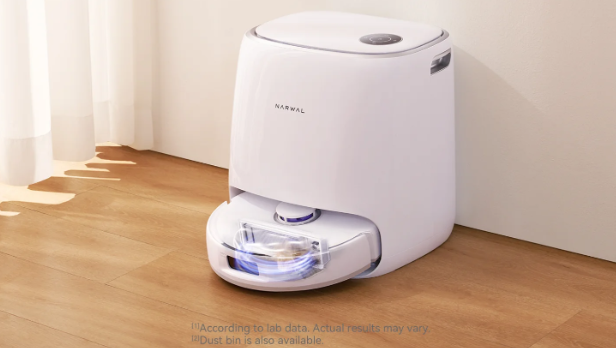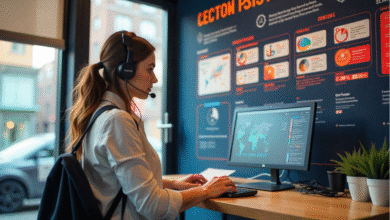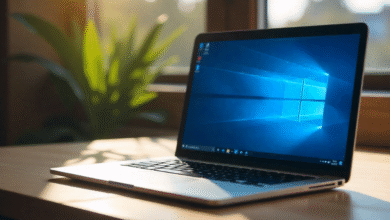Mastering Microscopic Floor Cleaning

Understanding the Challenge of Microscopic Stains
Invisible stains on floors present a unique cleaning challenge. These stains, often unnoticeable to the naked eye, can harbor bacteria and allergens, affecting indoor air quality and overall hygiene. Detailed cleaning methods are necessary to effectively remove these tough stains and ensure a truly clean surface.
Identifying Invisible Stains
The first step in addressing microscopic stains is understanding where they are likely to occur. High-traffic areas, kitchens, and bathrooms are prime locations. Consider factors like pet activity, food preparation, and moisture levels, as these contribute to the buildup of unseen contaminants. Lighting can also play a role in spotting these blemishes. Examining surfaces in different light conditions may reveal subtle discoloration or residues.
Essential Tools and Techniques
For a truly deep clean, the right tools and methods make all the difference. Robot vacuum and mops are now essential for modern homes, as they combine automated vacuuming with precise mopping to capture dirt, dust, and even microscopic particles that traditional tools often miss.
Microfiber mops and cloths remain valuable too. Their dense fibers lift debris more effectively than basic brooms or rags, especially for delicate surfaces. Choosing the right cleaning solution also matters—neutral pH cleaners are safe for most floors, while tougher stains may need specialized formulas. Finally, a systematic cleaning method, whether done manually or enhanced by smart robots, ensures every corner of your floor gets the attention it deserves.
Preparing the Area
Start by removing all loose debris from the floor using a vacuum cleaner or broom. This prevents dirt from being spread around during the wet cleaning process. Focus on corners, edges, and hard-to-reach areas where dust and grime tend to accumulate.
The Two-Bucket Method
The two-bucket method is a simple yet effective technique to avoid contaminating the cleaning solution. Fill one bucket with clean water and the other with a mixture of water and cleaning solution. Dip the mop or cloth into the solution, wring out excess liquid, and clean a small area of the floor. Rinse the mop or cloth in the bucket of clean water before reloading it with the cleaning solution.
Targeted Stain Removal
For stubborn or specific stains, consider pre-treating the affected area. Apply a small amount of the appropriate cleaning solution directly onto the stain and let it sit for a few minutes before scrubbing gently with a soft brush or cloth.
The Importance of Rinsing
After cleaning, rinsing the floor with clean water is essential to remove any remaining cleaning solution residue. This prevents the buildup of sticky films that can attract dirt and dull the floor’s appearance.
Drying the Floor
Proper drying is another critical step in microscopic floor cleaning. Use a clean, dry microfiber mop or cloth to absorb any remaining moisture. This helps prevent water spots and discourages the growth of mold and mildew.
Advanced Cleaning Methods
For floors requiring a deeper level of cleaning, consider these advanced methods:
- Steam Cleaning: Steam cleaners use high-temperature steam to dislodge dirt, bacteria, and allergens without the need for harsh chemicals. Effective for tile, grout, and some hardwood floors, steam cleaning can penetrate microscopic pores and crevices for thorough cleaning.
- Enzyme Cleaners: Enzyme cleaners use beneficial bacteria to break down organic stains, such as pet urine, food spills, and mildew. These cleaners are particularly useful for removing odors and preventing the recurrence of stains.
- Deep Scrubbing: For heavily soiled floors, deep scrubbing with a specialized floor scrubber and cleaning solution can effectively remove embedded dirt and grime. Ensure the scrubber is appropriate for the specific floor type to avoid damage.
Maintaining Cleanliness
Regular maintenance is key to preventing the buildup of microscopic stains. Sweep or vacuum floors regularly to remove loose dirt and debris. Clean spills immediately to prevent staining and the growth of bacteria.
Microscopic Cleaning for Various Floor Types
Different floor types require tailored cleaning approaches.
Hardwood Floors
Use pH-neutral cleaners specifically formulated for hardwood. Avoid excessive moisture, and always dry the floor thoroughly after cleaning.
Tile and Grout
Clean tile floors with a solution of water and tile cleaner. Pay special attention to grout lines, using a grout brush to remove embedded dirt and stains.
Laminate Floors
Use a laminate floor cleaner and a microfiber mop. Avoid steam cleaning, as it can damage the laminate.
Vinyl Floors
Clean vinyl floors with a mild detergent and water. Rinse thoroughly to remove any residue.
Ensuring a Healthier Home Environment
Microscopic floor cleaning is more than just aesthetic; it’s about creating a healthier living environment. Regular and thorough cleaning reduces allergens, bacteria, and other microscopic contaminants, improving indoor air quality and overall well-being.
For a comprehensive cleaning approach, consider integrating advanced cleaning solutions into your routine. Explore innovative options such as mop vacuum combos, which efficiently combine sweeping, mopping, and vacuuming functions. These tools can significantly enhance your cleaning efforts, ensuring every corner of your home is spotless.
Conclusion
Mastering microscopic floor cleaning techniques requires understanding the nature of invisible stains, utilizing the right tools and methods, and maintaining a consistent cleaning routine. By implementing these strategies, you can create a cleaner, healthier, and more comfortable home environment.



